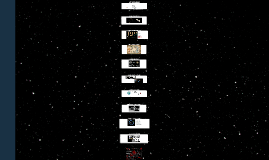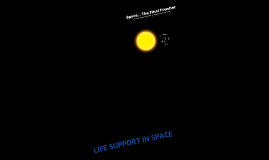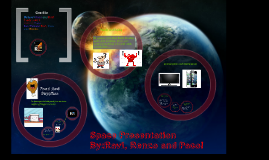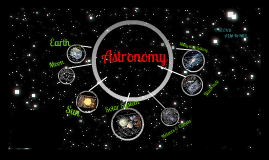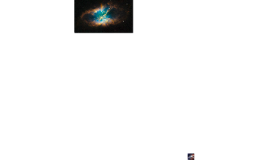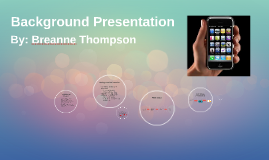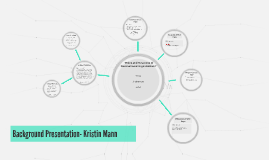space presentation
Transcript: THE END ALIA KAMEL The Moon is thought to have formed nearly 4.5 billion years ago, not long after the Earth. The Moon is in synchronous rotation: it rotates about its axis in about the same time it takes to orbit the Earth. (27 days and 8 hours). The same side of the moon always faces the Earth. As it has no atmosphere, the sky always appear dark, even during the day. Eclipses can only occur when the Sun, Earth, and Moon are all in a straight line Solar eclipses occur at new moon, when the Moon is between the Sun and Earth. In contrast, lunar eclipses occur at full moon, when the Earth is between the Sun and Moon. The Earth is 4.5 to 4.6 billion years old . Earth is the third planet from the Sun and the fifth largest. 71 Percent of the Earth's surface is covered with water. Earth isn't perfectly round, it is slightly flattened at the north and south poles. It orbits the sun every 365 days and once around itself everyday. The Earth contains five atmospheres; Troposphere, Stratosphere, Mesosphere, Thermosphere and Exosphere. Milky way Galaxy COMETS & METEORS Astronomy SUN Black hole MOON ASTEROIDS & BLACK HOLES Ancient astronomers observed points of light that appeared to move among the stars. They called these objects planets, meaning wanderers, and named them after Roman deities -- Jupiter, king of the gods; Mars, the god of war; Mercury, messenger of the gods; Venus, the goddess of love and beauty; and Saturn, father of Jupiter and god of agriculture. Since the invention of the telescope, three more planets have been discovered in our solar system: Uranus (1781), Neptune (1846) and Pluto (1930). Pluto was reclassified as a dwarf planet in 2006. In addition, our solar system is populated by thousands of small bodies such as asteroids and comets. The four planets closest to the sun -- Mercury, Venus, Earth, and Mars -- are called the terrestrial planets because they have solid rocky surfaces. The four large planets beyond the orbit of Mars -- Jupiter, Saturn, Uranus, and Neptune -- are called the gas giants. Comets are cosmic snowballs of frozen gases, rock and dust roughly the size of a small town. When a comet's orbit brings it close to the sun, it heats up and spews dust and gases into a giant glowing head larger than most planets. The dust and gases form a tail that stretches away from the sun for millions of kilometers. However, during a meteor shower, tens to hundreds of meteors can be seen each hour. Little chunks of rock and debris in space are called meteoroids. They become meteors -- or shooting stars -- when they fall through a planet's atmosphere; leaving a bright trail as they are heated to incandescence by the friction of the atmosphere. Pieces that survive the journey and hit the ground are called meteorites. Asteroids are rocky, airless worlds that orbit our sun, but are too small to be called planets. Tens of thousands of these "minor planets" are gathered in the main asteroid belt, a vast doughnut-shaped ring between the orbits of Mars and Jupiter. Asteroids that pass close to Earth are called Near-Earth Objects (NEOs). A black hole is a place in space where gravity pulls so much that even light can not get out. The gravity is so strong because matter has been squeezed into a tiny space. This can happen when a star is dying. Because no light can get out, people can't see black holes. They are invisible. Space telescopes with special tools can help find black holes. The special tools can see how stars that are very close to black holes act differently than other stars. Solar System Meteors & Comets Sun Earth MILKY WAY GALAXY The sun is a star, a hot ball of glowing gases at the heart of our solar system. Without the sun's intense energy and heat, there would be no life on Earth. And though it is special to us, there are billions of stars like our sun scattered across the Milky Way galaxy. The Sun is by far the largest object in the solar system. It contains more than 99.8% of the total mass of the Solar System (Jupiter contains most of the rest). The median size of stars in our galaxy is probably less than half the mass of the Sun. It's light reaches Earth in around 8 minutes. SOLAR SYSTEM EARTH The Milky Way is the galaxy that contains our Solar System. The Milky Way appears like a band because it is a disk-shaped structure being viewed from inside. The fact that this faint band of light is made up of stars . The Milky Way is just one of many galaxies. There are probably more than 170 billion (1.7 × 1011) galaxies in the observable Universe. Moon






